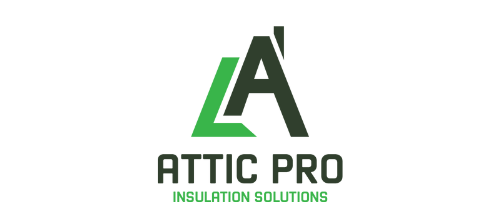For homeowners and property managers in Los Angeles, the phrase “licensed rodent sanitation company” signals competence and accountability. But what does licensing actually mean in this niche, and how do you tell if a provider is truly qualified to clean and restore a space after rodent activity? Los Angeles offers a crowded marketplace, from one-truck operators to full-scale remediation teams. This guide explains how to evaluate credentials, what standards matter on the job, and how the best teams blend health-conscious cleaning with prevention. Along the way, you will see how rodent sanitation integrates with exclusion and pest management, giving you long-term results rather than short-term relief.
First, it helps to separate roles. Pest control companies handle trapping, baiting, and monitoring. Exclusion specialists seal entry points, from torn gable screens to gaps at utility penetrations. Sanitation teams remove contamination, apply disinfectants, deodorize, and, when warranted, replace soiled insulation or vapor barriers. Some companies offer all three under one roof; others partner. Regardless of structure, the qualifications and practices you evaluate should reflect the work being performed inside your home or business.
Licensing, Insurance, and Training: What to Look For
In California, pest control operators are regulated by the state, and many sanitation teams operate within or alongside those companies. While sanitation itself centers on cleaning and building hygiene rather than pesticide application, the same culture of compliance should be evident. Ask whether the firm is properly insured, including general liability and workers’ compensation. This protects both you and the technicians working in attics and crawl spaces.
Training is just as important as paperwork. Crews should be versed in PPE use, HEPA filtration, and safe removal of contaminated insulation. Respirator fit checks, ladder safety, and confined-space awareness are essential in LA’s varied housing stock. A provider that invests in training can clearly explain their methods, from containment to disposal, and will be candid about when replacement is necessary versus when targeted sanitation will do.
Process Transparency: From Inspection to Sign-Off
Reputable companies begin with a thorough inspection and provide a written scope of work. Expect them to document contamination, identify likely access points, and outline the sequence of cleaning. During the job, they should protect living spaces, run HEPA-filtered equipment, and take before-and-after photos. At completion, they walk you through results and next steps—often including recommendations for exclusion to keep your clean space clean.
Transparency extends to products and equipment. You should know what disinfectants are used, where, and why. If a team relies on fragrances to cover odors rather than removing the source, that is a red flag. Likewise, if they cannot describe how they prevent dust migration during insulation removal, keep looking.
Local Knowledge: Why LA Experience Matters
Los Angeles presents a unique set of variables: microclimates, dense neighborhoods, aging roofs, and alleys that serve as back-of-house lifelines for businesses. Experienced local teams anticipate roofline entry on Spanish-style homes with open tile ends, know the quirks of hillside houses with segmented attics, and understand how alley dumpsters and landscaping affect pressure on commercial properties. That local knowledge shapes faster, safer cleanup and more durable recommendations.
Coastal moisture, Santa Ana winds, and temperature swings also influence odors and how quickly contamination dries and fractures into dust. A company grounded in LA conditions can explain why a particular attic needs partial insulation replacement while another does not, and why a ventilation tweak may help control lingering smells.
Coordination with Exclusion and Pest Control
Even the best sanitation fails if rodents can return. A top-tier provider coordinates with exclusion efforts, sealing gaps around utilities, reinforcing door sweeps, and replacing damaged vent screens. If a separate pest control firm manages trapping, the two should schedule work so cleanup does not disturb devices mid-cycle. It is common to hire a specialist for professional rodent sanitation and then bring in an exclusion crew to finish the job. When those teams communicate, you reap the benefits in cleaner air and lasting results.
Evaluating Proposals: What Real Value Looks Like
When comparing companies, focus on clarity and completeness rather than just timelines. Look for detailed scopes that specify areas to be sanitized, whether insulation removal is partial or full, what kind of containment will be used, and how odor control will be handled. The proposal should address attic or crawl space access and include a plan for protecting interior finishes when moving equipment in and out.
Ask how the team will handle sensitive conditions, such as tight crawl spaces, recessed lighting in attics, or shared walls in multifamily buildings. A thoughtful plan signals a company that has been in the tough spots and knows how to keep your home safe while they work.
During the Job: What You Should Observe
On arrival, technicians should review the plan with you, confirm access points, and lay down protective runners. As they work, you will likely hear HEPA vacuums and, during insulation removal, negative air machines. Waste is bagged before leaving the workspace, and pathways are kept tidy. Crews communicate progress and share photos if parts of the job are out of sight.
Midway through, it is reasonable to expect an update on what has been completed and whether any hidden conditions have been discovered, like a previously unknown nest behind a knee wall or contamination inside a return chase. This is also the moment to confirm any minor adjustments to scope, always with your approval.
Aftercare and Maintenance
Once sanitation is complete, a good company will discuss preventive steps—securing pet food, addressing vegetation against the structure, and reviewing door thresholds. They may suggest periodic checks, especially after weather events or nearby construction, which can stir up rodent movement. In neighborhoods with heavy pressure, a light maintenance schedule helps ensure vents stay secure and trash areas remain clean.
Red Flags to Avoid
Beware of vague promises of “complete odor removal” without an explanation of how contamination will be removed. Be wary of companies that skip photo documentation or decline to protect interior pathways. If a provider insists on sealing ventilation openings without providing alternative airflow solutions, that is a sign of inexperience. Your property deserves methodical work that respects both health and building performance.
Frequently Asked Questions
Q: Is licensing always required for rodent sanitation? A: Licensing is essential for pest control activities involving pesticides. For sanitation—removal of contamination, disinfection, and insulation replacement—focus on insurance, training, and demonstrated adherence to safety protocols. Many reputable providers operate as part of or alongside licensed pest control firms to ensure complete coverage.
Q: How can I verify a company’s qualifications? A: Ask for proof of insurance, request references, and review example reports with photos. A professional company is proud to share documentation and explain its process in clear terms.
Q: Will a licensed company handle both sanitation and exclusion? A: Sometimes. Some firms offer all services; others partner. The important thing is coordination so that cleaning supports sealing and vice versa.
Q: How long should a typical home sanitation take? A: Most single-family projects finish within a day or two, depending on contamination and access. Complex attics or crawl spaces may add time, and crews will outline this during the initial consultation.
Q: What products will be used inside my home? A: Expect hospital-grade disinfectants suitable for residential use, applied according to label directions with attention to ventilation and contact times. Crews should be able to name the products and explain why they are appropriate for your surfaces.
Choose Confidence, Not Guesswork
Finding the right provider in a crowded market can feel daunting, but a clear standard makes the choice easier. Look for documented protocols, strong communication, and a measured approach that favors source removal over cover-up. If you are ready to reset your space after rodent activity, reach out to a team that specializes in Los Angeles rodent sanitation, ask the right questions, and expect answers rooted in real experience. Your home, your health, and your peace of mind are worth it.

